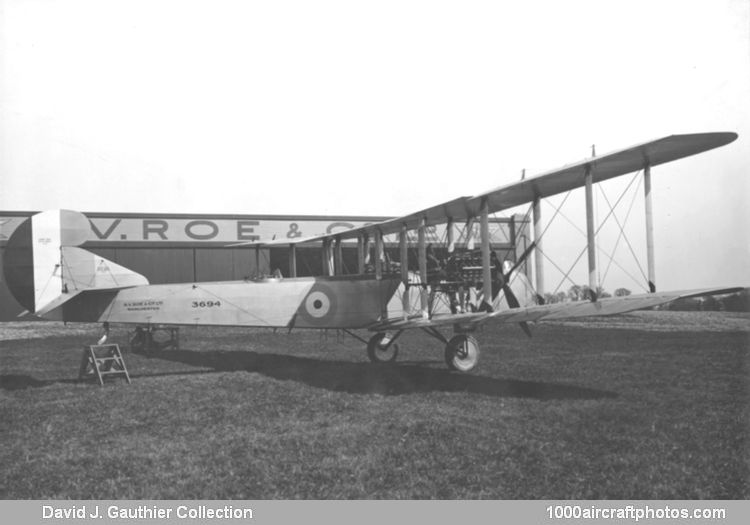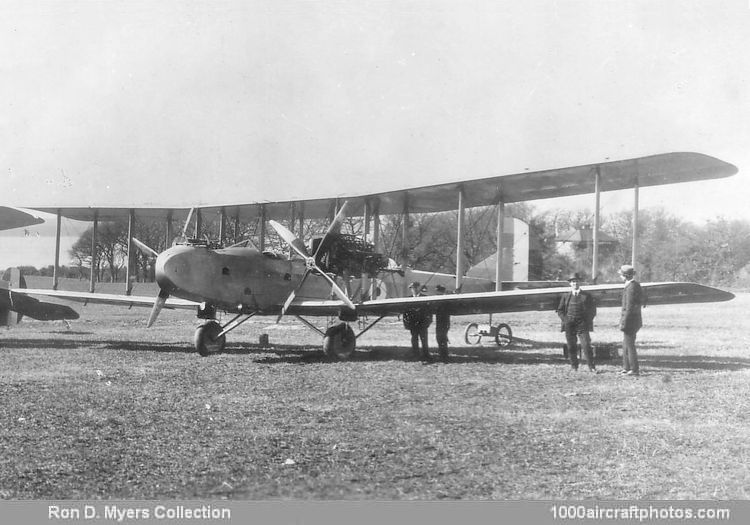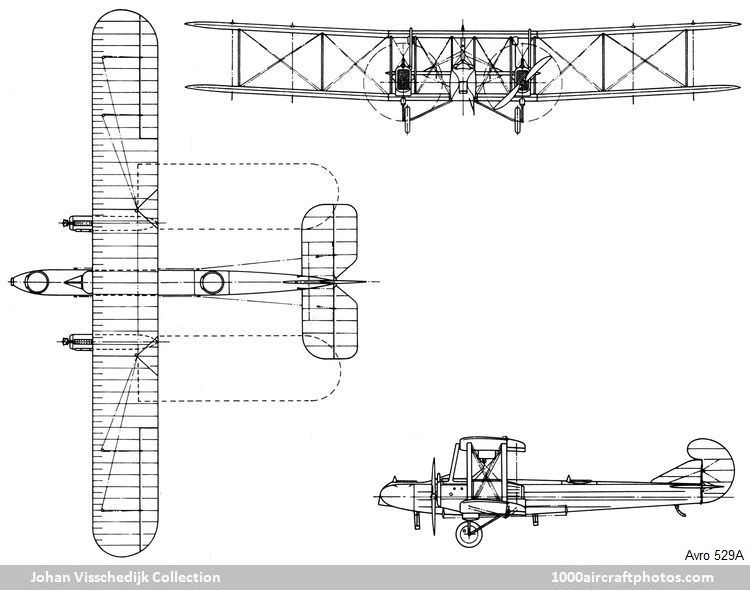DAVID J. GAUTHIER MEMORIAL COLLECTION
No. 10371. Avro 529 (3694) Royal Flying Corps
01/31/2011. Remarks by
Johan Visschedijk: "Sponsorship by the British Admiralty of the long-range bomber was evident in 1916, when two developments of the Avro 523 Pike were ordered as the prototypes Avro 529 and 529A. Both machines were constructed at the A.V. Roe & Company, Limited at Manchester and erected on the South Coast at Hamble, the 529 being completed in April, 1917, and the 529A six months later in October.
Serialed 3694, the 529 was slightly the smaller of the pair with a span of 63 ft (19.20 m) as opposed to the 64 ft 1 in (19.53 m) span of the 529A, serialed 3695. Each followed the same basic layout of the Pike, receiving three-bay unstaggered wings which could be folded to the rear. In place of the earlier design's square tips, however, those of the new machines were rounded. The three cockpits were disposed similarly to those of the Pike in the same style of fuselage but in one of slightly greater length.
(
Ron Myers Collection)
A significant difference between the 529 and the 529A lay in their engines; the 529 was equipped with a pair of 190 hp Rolls-Royce Falcons mounted without cowlings at mid-gap, fed with fuel under pressure from a single large tank to the rear of the pilot, while each of the two enclosed 230 hp B.H.P. (Beardmore-Halford-Pullinger) engines of the 529A, mounted on the lower wings, received its fuel independently from its own nacelle-mounted tank by way of a gravity tank installed on the underside of the upper planes.
Scarff rings fitted in both gunners' cockpits facilitated the use of the Lewis guns, and a set of controls in the amidships cockpit enabled the gunner to takeover in an emergency. The 529As offensive load of twenty vertically-stowed 50 lb. bombs was housed inside the fuselage and was released by the front gunner-who doubled as bomb-aimer-from a prone sighting position in the nose.
Despite this second attempt by Avro at producing a competent twin-engine, long-range bomber and the good overall handling reports earned by each machine, the effort expended on the 529 and the 529A was in vain and neither was destined for production."


